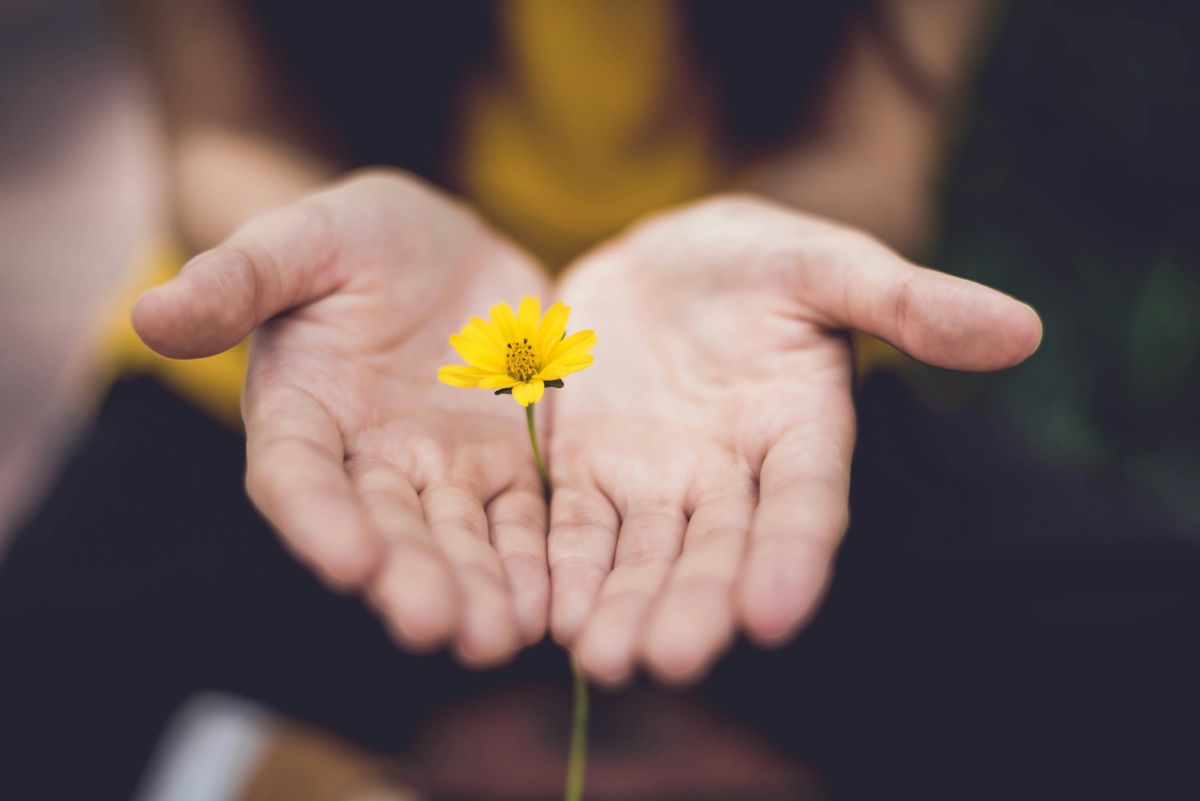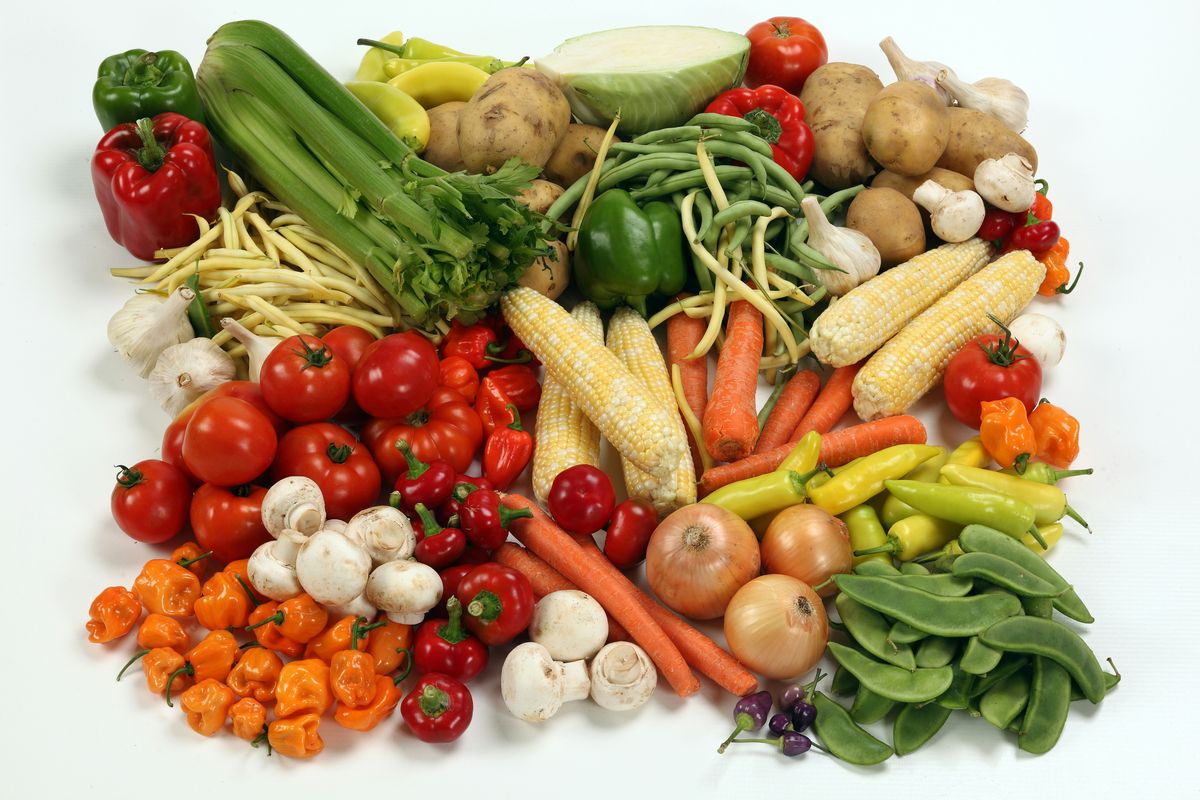Welcome to ‘The Art of Growing Potatoes: From Planting to Storing,’ a comprehensive guide that delves into the journey of cultivating potatoes in your own backyard. This article will provide you with expert insights on preparing the ground, nurturing your plants, and ensuring your harvest remains bountiful and fresh for as long as possible. Whether you’re a novice or an experienced gardener, these tips and techniques will help you maximize your potato yield and enjoy the delicious rewards of your hard work.
Table of Contents
Key Takeaways
- Proper soil preparation and the chitting process are crucial for healthy potato growth.
- Consistent care, including watering, fertilizing, and pest management, is key to a successful harvest.
- Harvest potatoes when the foliage begins to yellow and die back, and cure them for enhanced storage life.
- Store potatoes in a cool, dark, and well-ventilated area to maintain freshness and prevent spoilage.
- Explore a variety of recipes and share your homegrown potatoes with friends and family for added enjoyment.
Preparing the Ground for Growing Potatoes

Selecting the Right Soil
The foundation of a successful potato crop lies in the selection of the right soil. Potatoes thrive in well-drained, loamy soil with a slightly acidic pH, typically between 5.0 and 7.0. Before planting, it’s crucial to conduct a soil test to identify any nutrient deficiencies or pH imbalances. This allows you to amend the soil to create the ideal growing environment for your potatoes.
To prepare the soil for planting, incorporate organic matter such as compost or well-rotted manure. This not only enriches the soil with essential nutrients but also improves its structure and drainage capabilities. Avoid using fresh manure, as it can harm the plants. Here’s a simple guide to soil preparation:
- Loosen the soil to a depth of about 8-10 inches using a garden fork or tiller.
- Amend the soil by mixing in organic matter to enhance fertility.
By taking the time to properly prepare the soil, you set the stage for a bountiful harvest. Remember, potatoes are quite adaptable but giving them the right start is key to a healthy crop.
Chitting: The Pre-Planting Process
Chitting potatoes is a straightforward yet impactful step in the journey to a bountiful potato harvest. Chitting your potatoes will encourage them to produce strong, healthy sprouts before they even touch the soil, giving them a significant advantage once planted.
To chit your seed potatoes, follow these simple steps:
- Select seed potatoes with prominent eyes.
- Place them in a single layer in a seed tray or egg carton, eyes facing upwards.
- Store in a cool, well-ventilated area, away from direct sunlight.
Monitor the chitting process regularly, removing any weak or discolored sprouts to ensure that only the healthiest sprouts make it to your garden.
While chitting is an optional step, it is one that can lead to earlier and more robust yields. For those eager to give their crop the best possible start, chitting is a practice worth considering.
Planting Techniques for Optimal Growth
When embarking on the journey of growing your own potatoes, the planting technique you choose can greatly influence the outcome of your harvest. Proper planting is essential for a successful yield, and there are several methods suitable for beginners that ensure your potatoes get the best start.
One popular approach is the Traditional Method, which involves digging trenches or furrows about 12-15 inches apart in the garden bed. Seed potatoes are then placed into these trenches with the sprouts facing upwards, covered by approximately 3-4 inches of soil. As the plants grow, it’s important to gradually mound soil around the stems to protect the developing tubers.
When planting, consider adding Epsom salts and sugar into the holes. This simple trick provides magnesium and energy to the plants, aiding their growth.
For those looking to optimize their growth conditions further, here’s a quick guide:
- Irrigation: Use sprinkler systems or consider drip systems to prevent disease.
- Fertilization: Apply manure, especially from livestock, and maintain an optimal pH as low as 5. Fertilize 4 weeks after planting.
- Weed Management: Address weeds promptly, especially when tubers are bulking up.
- Crop Rotation: Alternate with other crops like spinach or lettuce to improve soil health.
Remember, potatoes taste better when you grow your own! Nutrient-rich “taters” epitomize the joy of gardening—satisfying to plant, quick to grow, and fun to dig up.
Nurturing Your Potato Plants

Watering and Fertilizing Strategies
Proper watering and fertilizing are crucial for the healthy growth of potatoes. After planting, ensure the soil is consistently moist but not waterlogged. Aim to provide about 1-2 inches of water per week, either through rainfall or manual watering, to prevent water stress and promote even moisture distribution.
For fertilizing, apply a complete fertilizer such as 10-20-10 early in the season. As the plants reach 6-8 inches, cover with organic matter to enrich the soil. Optimal pH levels for potatoes can be as low as 5, and it’s recommended to fertilize again 4 weeks after planting.
To enhance nutrient absorption, consider using a foliar spray of Epsom salts and water. This can be applied every 10 days throughout the growing season to support healthy plant development.
Watering systems like drip irrigation or soaker hoses are beneficial, delivering water directly to the soil and reducing the risk of foliage diseases. Mulching around the plants can also help retain soil moisture and regulate soil temperature.
Weed and Pest Control
Effective weed and pest control is crucial for the health and productivity of your potato plants. Regular monitoring is the cornerstone of a successful management strategy, allowing for early detection and intervention of any issues. To manage pest infestations, consider natural methods such as handpicking pests, applying organic insecticides, or introducing beneficial insects that prey on pests.
Implementing a regular monitoring schedule is essential. Early detection allows for timely interventions, which can be critical in preventing widespread damage.
For weed control, understanding the Common Weeds of Potato and using herbicides safe for potatoes is important. Factors to consider include the types of weeds present, crop rotation, cultivation techniques, the availability of herbicides, and the competitive strength of the potato crop. Additionally, mulching with organic materials (e.g., grass clippings, compost) can help conserve water and prevent weed growth.
The main pest on potatoes is the potato bug, which targets the foliage. Scout your plants daily and handpick these pests or apply an appropriately labeled pesticide, following all label directions carefully.
Recognizing and Addressing Plant Diseases
Potato plants are vulnerable to a range of diseases that can compromise their health and the quality of the harvest. Early detection and management are crucial in preventing the spread of diseases such as late blight, early blight, and potato scab. These diseases can lead to foliage damage, rotting tubers, and overall reduced crop quality.
To effectively manage potato diseases, implement a regular monitoring schedule. Look for signs of infestation or disease, such as unusual spots on leaves or stunted growth. Here are some common diseases and their symptoms:
- Late blight: Dark, water-soaked spots on leaves and stems
- Early blight: Brown lesions with concentric rings on leaves
- Potato scab: Rough, corky patches on the tuber surface
Practicing good garden hygiene is essential. Remove and destroy any infected plant material promptly. Crop rotation and adequate plant spacing are also key to ensuring good air circulation, which helps prevent disease spread. Utilizing disease-resistant cultivars can significantly reduce disease risks.
For more detailed information on managing potato diseases, refer to our article on growing potatoes in your backyard.
Remember, there is no cure for certain diseases like blackleg or bacterial soft rot once they have infected the plant. However, preventive measures, such as planting disease-free seed potatoes and avoiding waterlogged soils, are your best defense.
Harvesting and Storing Potatoes

Signs of Ready-to-Harvest Potatoes
Determining the right time to harvest potatoes is essential for achieving the best flavor and storage potential. Look for the foliage to yellow and wilt, which signifies that the potatoes have completed their growth cycle. This typically occurs a few weeks after the plants have finished flowering.
Sample digging is a practical approach to gauge the readiness of your potatoes. Carefully unearth a few tubers and examine their size and skin firmness. Mature potatoes will have a robust skin that resists light scraping and have reached the expected size for their variety.
Consistent observation and a little patience are key to harvesting potatoes at the perfect time.
Here’s a quick checklist to help you identify harvest-ready potatoes:
- Foliage begins to yellow and wilt
- Flowering has concluded
- Skin of the potato is firm and not easily damaged
- Tubers have reached expected size for the variety
Proper Harvesting Techniques
Harvesting your potatoes with the right technique is crucial for maintaining their quality and longevity. Begin by loosening the soil around your plants with a garden fork, taking care not to harm the tubers. Then, carefully lift the plants from the ground, either by hand or with the fork, ensuring you do not pull on the stems to avoid detaching them from the tubers.
Once the plants are lifted, sift through the soil to collect all the potatoes. It’s important to pick every last one, even the small ones, to prevent them from growing into new plants the following season. Here’s a simple list to guide you through the process:
- Loosen the soil with a garden fork or shovel.
- Lift the plants carefully to avoid stem detachment.
- Sift through the soil and collect all potatoes.
Remember, the key to a successful harvest is gentleness and thoroughness. Treat your potato plants and tubers with care to ensure a bountiful and quality harvest.
Curing Potatoes for Enhanced Storage Life
Curing your potatoes is a critical step that should not be overlooked. After harvesting, allow the potatoes to cure for about two weeks in a cool, well-ventilated area. This process is essential for toughening the skin and healing any minor cuts or bruises, which in turn enhances their storage life.
During the curing period, it’s important to gently remove any excess soil without washing the potatoes, as this can damage their protective skin.
To ensure the best results, follow these simple steps:
- Place the potatoes in a single layer, avoiding overcrowding.
- Maintain a consistent temperature of 45-50°F (7-10°C).
- Ensure the area is dark to prevent greening and the development of solanine, a natural toxin.
Remember, the effort you put into curing your potatoes will pay off in their longevity and quality when stored properly.
Storing Potatoes for Longevity

Ideal Storage Conditions
Ensuring the longevity of your homegrown potatoes starts with creating the ideal storage conditions. Potatoes thrive in environments that are cool, dark, and have good air circulation. The perfect temperature range to store potatoes is between 45-50 degrees Fahrenheit (7-10 degrees Celsius), which is warmer than a refrigerator but cooler than typical room temperature. This range helps prevent the potatoes from sprouting prematurely or becoming too soft.
Ventilation is key to preventing moisture buildup that can lead to rot. Use containers that promote airflow, such as burlap sacks, paper bags, or wooden crates. It’s important to keep the potatoes out of direct sunlight to avoid the greening effect and the production of solanine, a potentially harmful compound.
Regular inspection of your stored potatoes is crucial. Remove any that show signs of spoilage to prevent the spread of rot to the rest of your harvest.
Lastly, avoid storing potatoes near onions or fruits that release ethylene gas, as this can accelerate spoilage. By adhering to these storage principles, you can enjoy your potatoes for months to come.
Avoiding Common Storage Pitfalls
Storing your homegrown potatoes properly is as crucial as the growing process itself. Avoid the common mistake of improper storage temperature, which can drastically reduce the shelf life of your potatoes. Storing potatoes in the refrigerator can lead to a conversion of starches into sugars, affecting taste and texture.
Containers play a significant role in potato storage. Opt for breathable options like burlap sacks, paper bags, or wooden crates to facilitate air circulation and prevent moisture buildup, which can cause rot.
Regular inspection of your stored potatoes is essential. Remove any showing signs of decay promptly to prevent the spread to healthy tubers.
Remember, the key to successful potato storage is maintaining a consistent environment that is cool, dark, and well-ventilated. By following these guidelines, you can enjoy your homegrown potatoes for months to come.
Extending Shelf Life with Proper Care
To maximize the shelf life of your homegrown potatoes, it’s essential to adhere to a few key practices. Regular inspection is crucial; by promptly removing any potatoes that show signs of spoilage, you can prevent the spread of rot to healthy tubers.
Temperature control plays a vital role in preserving the quality of your potatoes. Ensure they are stored in a cool, dark place, ideally between 45-50\u00b0F (7-10\u00b0C). Excessive heat or light can accelerate spoilage and reduce shelf life.
Proper storage techniques not only extend the shelf life of potatoes but also maintain their flavor and nutritional value.
Here are some additional tips for extending the storage life of your potatoes:
- Cure the potatoes before storage to toughen the skin.
- Store in breathable containers like burlap sacks or wooden crates.
- Keep the storage area well-ventilated to avoid moisture buildup.
- Gently remove excess soil without damaging the skin.
By following these guidelines, you can enjoy your homegrown potatoes for a longer period while preserving their taste and nutritional benefits.
Delicious Ways to Enjoy Your Homegrown Potatoes

Classic Potato Recipes
After nurturing your potato plants to maturity, the true joy comes in the form of savoring your homegrown potatoes. Classic potato recipes are a testament to the versatility and timeless appeal of this staple food. Here’s a taste of what you can create:
- Mashed Potatoes: A dish that epitomizes comfort, mashed potatoes can be elevated with the addition of herbs, garlic, or cheese.
- Roasted Potatoes: Achieve the perfect balance of crispy and tender by roasting your potatoes with olive oil and a sprinkle of salt.
- Potato Salad: Ideal for outdoor gatherings, mix your boiled potatoes with mayonnaise, mustard, and fresh herbs.
Embrace the simplicity of these dishes or add your own twist to make each recipe uniquely yours.
While these classics are sure to please, don’t hesitate to experiment with your bounty. From the crispy delight of French Fries to the loaded experience of a Baked Potato, each dish offers a different way to enjoy the fruits of your labor. Remember, the best recipes are those shared with friends and family, creating memories that last as long as the flavors linger on your palate.
Creative Potato Dishes
Once you’ve mastered the basics, it’s time to get creative with your homegrown potatoes. Innovative recipes can transform the ordinary potato into a culinary delight. For instance, consider the following dishes to expand your potato repertoire:
- Potato Gnocchi: These Italian dumplings pair beautifully with a variety of sauces.
- Loaded Baked Potatoes: A customizable favorite, topped with anything from cheese to bacon.
- Potato Pancakes: Perfect for breakfast or as a side, these are best served with sour cream or applesauce.
- Potato Salad: A refreshing choice for picnics, with endless variations to suit any palate.
- French Fries: A classic treat, made even better with potatoes from your own garden.
Embrace the versatility of potatoes by experimenting with different flavors and cooking methods. The satisfaction of using your own harvest can make these dishes even more enjoyable.
Remember, the key to great potato dishes is not just the recipe, but the love and care you put into growing the potatoes themselves. From your garden to your table, the journey of the potato is one of passion and creativity.
Sharing the Bounty with Friends and Family
After nurturing your potato plants and enjoying the fruits of your labor, it’s a beautiful gesture to share the harvest with friends and family. Not only does it spread the joy of fresh, homegrown produce, but it also encourages a sense of community and sharing. Consider these simple ideas for sharing your bounty:
- Package your potatoes in decorative baskets or eco-friendly bags.
- Include a favorite recipe card with your potato gift.
- Host a ‘potato potluck’ where each guest brings a unique potato dish.
Sharing homegrown potatoes is not just about giving away food; it’s about fostering connections and creating memories around the joy of gardening.
Remember, the act of sharing can be as rewarding as the growing process itself. By passing on a portion of your harvest, you’re not only providing a nutritious addition to someone’s table but also inspiring them to perhaps start their own gardening adventure.
Cultivating Zucchini: Tips for a Successful and Abundant Harvest
Step-by-Step to Growing Bell Peppers in Your Garden
Mastering the Art of Growing Carrots: Tips for a Bountiful Harvest


